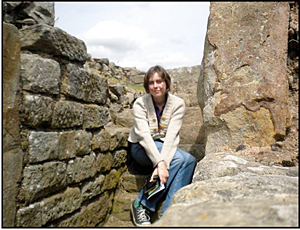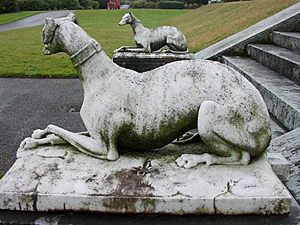

ADVERTISEMENT
- UD grad students help preserve cultural heritage across U.S., around globe
- LeeAnn Barnes Gordon: Agora Excavations, Athens, Greece
- Lauren Bradley: Walters Art Museum, Baltimore
- Alisha Chipman: Paul Messier, LLC
- Rose Daly: Nasher Sculpture Center, Dallas
- Emily MacDonald-Korth and Carlos Moya: Fengguo Temple, Yixian, China
- Amanda Maloney: C.C. von Waldthausen Fotorestauratie Atelier, Amsterdam
- Gwen Manthey: Western Center for the Conservation of Fine Arts, Denver
- Carrie Roberts: English Heritage, London
- Kirsten Travers: Stichting Restauratie Atelier Limburg, the Netherlands
- Renee Wolcott: Smithsonian National Portrait Gallery
- Erin A. Anderson: Poggio Colla, Mugello Valley of Tuscany
- Tatiana Cole: Metropolitan Museum of Art
- Anne Getts: Philadelphia Museum of Art
- Sarah Gowen and Stephanie Oman: Shangri La, Honolulu, Hawaii
- Allison Holcomb: Colonial Williamsburg, Williamsburg, Va.
- Ellen Moody: Sherman Fairchild Center, Metropolitan Museum of Art
- Steve O'Banion: Smithsonian American Art Museum, Lunder Conservation Center
- Ellen Promise: Philadelphia Museum of Art
11:35 a.m., July 28, 2010----This summer I traveled to London to work with David Thickett, conservation scientist at English Heritage. English Heritage is the British government's principal adviser on the historic environment, and oversees the preservation of over 400 sites in the UK, including Dover Castle, Housestead's Fort on Hadrian's Wall, and Stonehenge.
As an intern at English Heritage, I've been active in a number of preventive conservation projects that involve on-site environmental monitoring, from calculating the efficiency of silica gel in the preservation of archaeological iron, to using infrared spectroscopy, to analyzing the harmful effects of dust on varnish.
My focus, however, has been on the preventive conservation of architectural stone and outdoor sculpture, and looking at how environmental behavior can lead to damage in porous stone. One of my projects has involved interpreting environmental data derived from a tent-covered marble greyhound at Brodsworth Hall, with the aim of determining if the tent has provided adequate protection against frost damage during cold winter months.
For another project, I've taken temperature and relative humidity data from stone storage units at various English Heritage sites and calculated the risk of damage to architectural stone fragments due to salts.
Finally, Thickett and I have been analyzing samples of historic sandstone using infrared, SEM-EDS (Scanning Electron Microscopy-Energy Dispersive Spectroscopy) and wet chemical methods that will help determine which stone types are suitable for reburial -- a stone preservation technique that is being introduced as a sustainable alternative to storage.
Although our offices are based in London, I've been able to join Thickett on his travels to a number of English Heritage regional centers, including Dover Castle, the archaeological conservation center at Fort Cumberland, and various sites near York and along Hadrian's Wall. When I'm not at work (or on a train!), I've spent my time visiting museums and historic sites in London, from the Globe Theater to the Tower of London, to the Victoria and Albert Museum's renovated medieval and renaissance galleries, to the Museum of London. I've also traveled to Canterbury, Cambridge, and Hampton Court as part of my ongoing research into the architectural history of England.
I have loved working with the conservators at English Heritage and feel that the experience has opened my eyes to how the conservation of museum collections and the historic environment is managed in the UK, and the implications that issues of environmental and economic sustainability may have on how this is done in the future.


